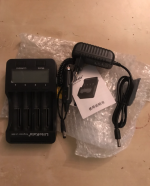mxlemming
100 kW
- Joined
- Jul 17, 2020
- Messages
- 1,122
I have failed to make batteries die from over current/short circuit.
A while ago i put a jump lead clamp across the ends of an 18650 and... Nothing really happened. It just got hot.
Where they all seem to go wrong is when they're over charged. It realistically takes a significant over charge to blow a cell but it's actually very easy with series parallel packs to accidentally create this fault. All you need is for one of the cells in a P group to come unsoldered, and with a16,20...s whatever... pack there a lot of spare voltage available from the charger.
At this point, you have a p group with fewer cells in it so the remaining ones charge much faster. If you have a BMS and it's still connected to the ones charging, it'll shut down. If it's connected to the cell that's... disconnected... The fault is silent until it blows.
That's why they usually blow while charging. Something shakes the connections loose.
For this reason, I charge mine in my concrete garage with 1970s asbestos roof and always check the cell voltages on the BMS 15 minutes in to see they're all going up equally.
A while ago i put a jump lead clamp across the ends of an 18650 and... Nothing really happened. It just got hot.
Where they all seem to go wrong is when they're over charged. It realistically takes a significant over charge to blow a cell but it's actually very easy with series parallel packs to accidentally create this fault. All you need is for one of the cells in a P group to come unsoldered, and with a16,20...s whatever... pack there a lot of spare voltage available from the charger.
At this point, you have a p group with fewer cells in it so the remaining ones charge much faster. If you have a BMS and it's still connected to the ones charging, it'll shut down. If it's connected to the cell that's... disconnected... The fault is silent until it blows.
That's why they usually blow while charging. Something shakes the connections loose.
For this reason, I charge mine in my concrete garage with 1970s asbestos roof and always check the cell voltages on the BMS 15 minutes in to see they're all going up equally.



![Skärmavbild%202023-01-03%20kl.%2021.03.57[1].png](/sphere/data/attachments/189/189808-b3ca06eaf11d16bec31c1c5a9f3838b9.jpg)

